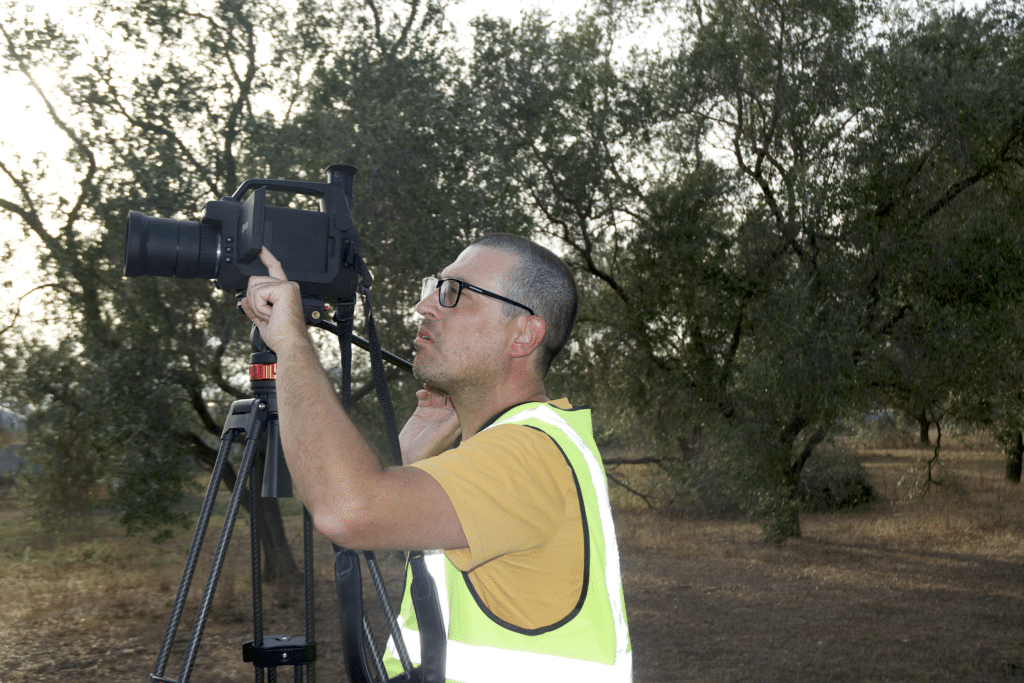On June 22, a train carrying Canadian crude oil derailed in northwestern Iowa, releasing an estimated 230,000 gallons of oil into a flooded river. As a result of the derailment, over 30 rail tank cars ended up in the water, with 14 cars confirmed to have leaked oil.
To put the size of this spill in perspective, an Enbridge pipeline that leaked in Michigan in July 2010 released roughly 1,000,000 gallons of tar sands oil into the Kalamazoo River. Cleanup for this spill, one of the largest inland oil spills on record, took years and more than $1 billion.
Like the Kalamazoo River spill, the train that derailed in Iowa was carrying tar sands oil from Alberta, Canada.
This crash, near Doon, Iowa, also is the first one involving the new, safer DOT-117R tank cars that promised to make oil safer to transport by rail. The accident reveals that these tank cars are not foolproof, considering the nearly quarter million gallons of oil released from them into an Iowa river.
Workers have contained nearly half of the crude #oil spilled near Rock River in northwest #Iowa over the weekend following a freight train derailment on Friday: https://t.co/cBGUwE4LG3 pic.twitter.com/PS4z3tPM5p
— EnergyNow.com (@US_EnergyNow) June 25, 2018
Oil Trains Likely to Spill Into Rivers and Lakes
The reality of rail transport is that train tracks generally follow rivers across North America. As a result, many oil train derailments also mean oil spills into rivers and other bodies of water.
The 2015 report “Runaway Risks” by the environmental nonprofit Center for Biological Diversity found that “within just a quarter-mile of existing and planned oil-train routes there are 3,600 stream miles and 73,468 square miles of lakes, reservoirs and wetlands, including iconic waterbodies such as the Puget Sound, Lake Michigan, Lake Erie, and the Columbia, Hudson and Mississippi rivers.”
Scientists found that after the deadly 2013 oil train disaster in Lac-Mégantic, Quebec, Canada, the resulting oil spill into the Chaudière River had notable impacts on the health of fish and other river life. A year after the disaster, one local fishing guide said, “People still fish the lake but the river is pretty dead.”
Less than six months after the Lac-Mégantic disaster, another oil train derailed in Aliceville, Alabama, resulting in a large oil spill into wetlands, with some critics saying the spill cleanup wasn’t properly handled.
A similar story happened to the north in Gogama, Ontario, where two oil trains derailed within a month in March 2015 and resulted in two major spills into the Makami River.
Shortly after the second derailment Canadian National (CN), the rail company that operated both of the trains that ultimately derailed, stated that “there is no evidence so far that either the water or air quality near the site have been affected.”
However, CN would not allow anyone from the public to visit the derailment sites. Meanwhile, the Canadian government put CN in charge of all subsequent environmental testing to determine the level of contamination in the river and nearby lake.
A year after the accident, CN spokesman Jim Feeny said that test results showed that everything was fine. “The results show that the lake is clean,” Feeny told the CBC. “The river water is clean.”
Gogama’s Fire Chief Mike Benson was initially pleased with the response from CN but later changed his tune. It was over a year after the accidents that Benson learned that CN was in charge of the environmental testing — and he wasn’t pleased.
“I can’t believe our government tells the fox to test the chickens,” he said.
Meanwhile, the spokesman for rail company BNSF, which operated the train that just derailed in Iowa, said that “ongoing monitoring is occurring for any potential conditions that could impact workers and the community and, so far, have found no levels of concern.”
Estimated 230,000 Gallons of Crude Oil Spills Into Iowa River After Train Derailment https://t.co/PrKe4HBWUu pic.twitter.com/3NUFBMRyqH
— Earth First! Journal (@efjournal) June 25, 2018
In addition, since 2014 West Virginia, Virginia, Illinois, and Oregon have all experienced oil train derailments which ended up with burning and leaking oil tank cars either spilling oil in a river or not far from rivers. Last July another train derailed and spilled in Plainfield, Illinois, but based on reports, none of the 45,000 gallons of released oil made it to the nearby river.
More Trains + Weak Regulations = More Spills
The oil-by-rail industry has had a good stretch without any serious accidents since Mosier, Oregon in June 2016. However, the main reason for the drop in oil train accidents is the major decrease in the total volume of oil being moved by rail in North America during that time.
As we’ve reported on DeSmog, that trend is starting to reverse as Canadian oil-by-rail approaches record volumes, with U.S. volumes also increasing. Given the lack of pipeline capacity in the prolific Permian Basin in Texas, the oil shale boom there is expected to push more volatile oil onto the rails to get it to refineries and ports.
Despite the lessons learned from the string of accidents during the last oil train surge, there have not been significant regulatory changes to address the known dangers.
Just weeks before the Iowa accident, Senator Charles Schumer (NY-D) once again called for establishing standards to reduce the volatility of oil moved by rail in order to avoid fires. This was an area that oil-by-rail regulations updated in 2015 failed to address.
Another top safety measure for oil trains was the requirement of modern electronically controlled pneumatic brakes, to help trains stop sooner and over shorter distances. While this was passed in 2015 and scheduled to take effect in 2021, it has since been repealed. After this regulation was announced, the CEO of BNSF told an energy conference that “this rule will have to be changed in the future.”
The rule requiring modern safety brakes for oil trains was repealed in 2017.
While those are the top two risks in moving crude oil by rail — reducing oil volatility and improving braking systems — and neither have been addressed, there are many other known safety improvements that the oil and rail industries have failed to adopt. And now we know the newer “safer” tank cars also provide no concrete safety benefits over the older, thinner tank cars when a train crashes.
In addition, oil trains are still not required to have oil spill response plans, despite these trains being responsible for some of the largest land-based oil spills in North America in modern history.
Unfortunately, nearly five years after the Lac-Mégantic disaster, which claimed 47 lives, little has been done to improve the safety of moving volatile oil by rail on this continent. As the oil industry once again turns to rail to transport its products, the real risks of this practice are likely to become apparent once again.
The spill in Iowa is just another example of the known risks of moving oil by rail and is likely to require a major environmental cleanup.
However, among the major risks is another fiery oil train accident in a populated area. As National Transportation Safety Board Chairman Christopher A. Hart noted in 2016, that remains a very tangible threat to communities along oil-by-rail routes.
“We’ve been lucky thus far that derailments involving flammable liquids in America have not yet occurred in a populated area,” Hart announced at a press conference on January 13, 2016. “But an American version of Lac-Mégantic could happen at any time. Instead of happening out in the middle of a wheat field, it could happen in the middle of a big city.”
Main image: The oil train pile-up and tar sands spill into a river in northwestern Iowa. Credit: CBC News screenshot
Subscribe to our newsletter
Stay up to date with DeSmog news and alerts







